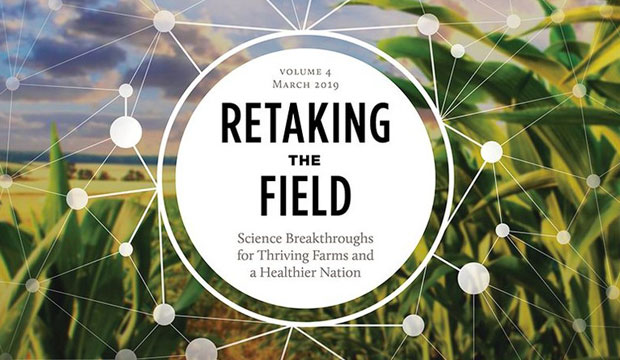UNIVERSITY PARK, Pa. — A new report issued today (March 27) shows how U.S. farmers — facing a surge of weather events and disease outbreaks — can increase production and revenues with innovations produced by federally funded agricultural research, including studies performed in Penn State’s College of Agricultural Sciences.
The United States needs to increase its investment in agricultural research or it risks falling farther behind China, according to the report, issued by the Supporters of Agricultural Research Foundation, known as SoAR, and 20 research institutions that participate in SoAR’s FedByScience initiative, a collaborative effort among universities to raise the visibility of the value of federal investment in food and agricultural research.
The new report, Retaking the Field: Science Breakthroughs for Thriving Farms and a Healthier Nation, highlights research projects at these 20 universities that address the five Science Breakthroughs areas identified as the most important fields to advance in agriculture by the year 2030: genomics, microbiomes, sensors, data and informatics, and transdisciplinary research.
The five fields were determined by the National Academies of Sciences, Engineering, and Medicine as part of a widespread scientific effort to prioritize agricultural research endeavors. The report shows how scientists funded by USDA’s National Institute of Food and Agriculture are leveraging federal resources to advance these areas.
The publication features Penn State under microbiomes research, highlighting a multiyear field study led by Michela Centinari, assistant professor of viticulture in the Department of Plant Science. The project focuses on boosting fruit crop productivity by harnessing the interactions within the microbial communities of soil and roots. The goals are to maximize production, improve soil health and limit the use of agrochemicals.
The College of Agricultural Sciences has been a leader in the advancement of microbiomes research at the University, with faculty across several departments helping to initiate, and now participating in, the Microbiome Center under the Huck Institutes of the Life Sciences.
Investments in the five areas identified for science breakthroughs will allow the United States to achieve a number of broader goals for food and agriculture in the next decade, according to Thomas Grumbly, SoAR’s president.
“But these advancements aren’t possible without federal funding for the research needed to tackle agriculture’s greatest problems, ” he said. “Farmers are getting hammered right now, and they need innovation to at least soften the blows.”
Representatives from the agricultural and science sectors reconvened earlier this year to identify research goals that can be achieved only through advancing the five science breakthrough areas. By 2030, SoAR contends, innovations in agricultural research like the projects highlighted in this report can:
- Reduce water use in agriculture by 20 percent.
- Reduce fertilizer use by 15 percent.
- Significantly reduce the need for fungicides and pesticides in plant production.
- Radically reduce the incidence of infectious disease epidemics for livestock.
- Reduce incidence of foodborne illnesses by 50 percent.
- Increase the availability of new plant varieties and animal products to deliver food with enhanced nutrient content.
“Now is the time to double down on federal investments in agricultural research,” Grumbly said. “There are urgent needs to produce more food, fiber and fuel while consuming fewer resources and protecting public health in the face of existing and emerging threats.”
The Retaking the Field report can be found online at the SoAR website. For more information about Penn State agricultural research, visit the College of Agricultural Sciences research webpage.

